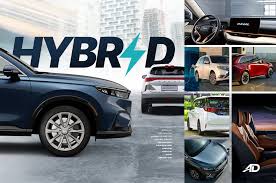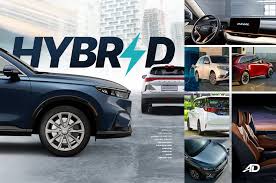
Chinese businesses with strong hybrid lineups are emerging as winners in the fierce pricing war that EV manufacturers in China are waging to keep up with the decreasing demand. These brands are luring customers with long-range vehicles that can be had for less money than gasoline-powered automobiles.
The developing tendency could offer some optimism to multinational manufacturers like Toyota and Honda that are pursuing "multi-pronged" electrification initiatives, as EV sales are slowing down in Europe and the US due in part to expensive auto loans.
The world's best-selling carmaker, Toyota, already sells one-third of all hybrid vehicles. In the six months ending in September, the company's hybrid sales increased by 34%, surpassing the growth of 9% in total revenue.
Experts caution that Chinese competitors, who have dominated the local hybrid market and are now going abroad due to their dominance as the world's lowest-cost EV maker following significant supply chain investment, are becoming a greater danger to international brands.
While most hybrid powertrains in the US retail for between $1,500 and $2,000 more than combustion models, certain hybrids in China are available for as little as 23% less than pure electric vehicles.
Due to their lower cost, hybrid vehicles are becoming more and more popular in China. According to analysts, hybrids use less petrol and function nearly exactly like pure electric vehicles on short daily trips.
"People are increasingly accepting that a car can be equipped with both an electric motor and a gasoline engine, as they are highly complementary," said Xu Min, a professor at Shanghai Jiao Tong University's Institute of Intelligent Vehicle. "Wherever the gasoline engine is low in efficiency, we can make up for it with the electric motor."
According to industry data, demand for two types of hybrid vehicles is high: plug-in hybrids (PHEV) and extended-range hybrids (EREV). Together, these vehicle shipments have increased by 85% this year, surpassing the 14% growth in sales of pure electric vehicles.
According to data from the China Association of Automobile Manufacturers (CAAM), the market for these hybrid vehicles is currently half as large as the market for pure EVs and accounts for 12% of all passenger car sales because of their extreme popularity.
In sharp contrast to many other businesses that are struggling with an excess of unsold inventory, Li Auto, the most well-known seller of extended-range hybrid vehicles in China, has thousands of clients waiting for delivery of its new large SUVs.
"The extended-range hybrids are the best option for Chinese drivers who want ... a solution to driving range anxiety, better fuel efficiency, smarter driving features and lower prices," said Yale Zhang, managing director at the consultancy Automotive Foresight.
With eight of the ten plug-in hybrid vehicles that are the best-selling in China, BYD has solidified its lead in the PHEV market.
An electric motor or a petrol engine can be used to directly drive a plug-in hybrid. An EREV's petrol engine functions as a power bank to recharge the batteries when they run low. Its larger battery pack allows it to run exclusively on electricity.
Gasoline car sales have been impacted by the rising popularity of plug-in hybrid electric vehicles (PHEVs) and plug-in hybrid vehicles (EREVs) made by Chinese companies, which account for ten of the best-selling PHEV or EREV models. Toyota created the HEV market with the Prius in the late 1990s.
Sales of petrol cars fell 11% in China, highlighting the possible difficulties faced by foreign manufacturers, while sales of HEVs, which Toyota still dominates with four best-selling models, fell 15%.
HEVs have a tiny battery pack that is recharged when braking and used as supplemental power. The main powertrain of a HEV is gasoline-powered. The government policy in China, which offers tax breaks for EVs, PHEVs, and EREVs in order to promote battery-driven hybrids, is partially to blame for the decline in sales of that kind of vehicle.
In 2017, General Motors introduced the Buick Velite 5, the country's first extended-range hybrid vehicle, two years ahead of Li Auto's mass production. This was the first instance of a foreign manufacturer successfully breaking into the Chinese EREV market, only to lose it to regional competitors.
However, with sales of little over 4,000 units, it was an unsuccessful experiment, and GM stopped selling the cars in 2020. In contrast, during the first nine months of 2023, Li Auto sold 244,225 EREVs.
A clear warning of the mounting dangers posed by Chinese competitors who are now focusing on export markets for growth comes from the struggles of companies like GM and Toyota.
With the Han, Qin, and Song lineups available in less-charged regions of Latin America, BYD is increasing its sales of plug-in hybrid electric vehicles abroad.
According to persons with knowledge of the situation, Stellantis is spending $1.6 billion in Leapmotor and is considering importing the Chinese partner's EREV hybrid cars into Europe.
According to Stellantis, working with Leapmotor on new energy technology solutions is still possible. Requests for comments from Leapmotor were not answered.
However, Xu from Jiao Tong University pointed out that demand for Chinese cars can be impacted by variations in driver preferences in different regions.
For instance, buyers in North America would seek out vehicles with greater horsepower in order to tow trailers, which would increase the appeal of HEVs.
Some people remain doubtful about the long-term viability of HEVs.
"Conventional hybrid (HEV) is breathing life into a dying patient - the gasoline engine," said Bill Russo, CEO of Shanghai-based advisory firm Automobility.
(Source:www.business-today.in)
The developing tendency could offer some optimism to multinational manufacturers like Toyota and Honda that are pursuing "multi-pronged" electrification initiatives, as EV sales are slowing down in Europe and the US due in part to expensive auto loans.
The world's best-selling carmaker, Toyota, already sells one-third of all hybrid vehicles. In the six months ending in September, the company's hybrid sales increased by 34%, surpassing the growth of 9% in total revenue.
Experts caution that Chinese competitors, who have dominated the local hybrid market and are now going abroad due to their dominance as the world's lowest-cost EV maker following significant supply chain investment, are becoming a greater danger to international brands.
While most hybrid powertrains in the US retail for between $1,500 and $2,000 more than combustion models, certain hybrids in China are available for as little as 23% less than pure electric vehicles.
Due to their lower cost, hybrid vehicles are becoming more and more popular in China. According to analysts, hybrids use less petrol and function nearly exactly like pure electric vehicles on short daily trips.
"People are increasingly accepting that a car can be equipped with both an electric motor and a gasoline engine, as they are highly complementary," said Xu Min, a professor at Shanghai Jiao Tong University's Institute of Intelligent Vehicle. "Wherever the gasoline engine is low in efficiency, we can make up for it with the electric motor."
According to industry data, demand for two types of hybrid vehicles is high: plug-in hybrids (PHEV) and extended-range hybrids (EREV). Together, these vehicle shipments have increased by 85% this year, surpassing the 14% growth in sales of pure electric vehicles.
According to data from the China Association of Automobile Manufacturers (CAAM), the market for these hybrid vehicles is currently half as large as the market for pure EVs and accounts for 12% of all passenger car sales because of their extreme popularity.
In sharp contrast to many other businesses that are struggling with an excess of unsold inventory, Li Auto, the most well-known seller of extended-range hybrid vehicles in China, has thousands of clients waiting for delivery of its new large SUVs.
"The extended-range hybrids are the best option for Chinese drivers who want ... a solution to driving range anxiety, better fuel efficiency, smarter driving features and lower prices," said Yale Zhang, managing director at the consultancy Automotive Foresight.
With eight of the ten plug-in hybrid vehicles that are the best-selling in China, BYD has solidified its lead in the PHEV market.
An electric motor or a petrol engine can be used to directly drive a plug-in hybrid. An EREV's petrol engine functions as a power bank to recharge the batteries when they run low. Its larger battery pack allows it to run exclusively on electricity.
Gasoline car sales have been impacted by the rising popularity of plug-in hybrid electric vehicles (PHEVs) and plug-in hybrid vehicles (EREVs) made by Chinese companies, which account for ten of the best-selling PHEV or EREV models. Toyota created the HEV market with the Prius in the late 1990s.
Sales of petrol cars fell 11% in China, highlighting the possible difficulties faced by foreign manufacturers, while sales of HEVs, which Toyota still dominates with four best-selling models, fell 15%.
HEVs have a tiny battery pack that is recharged when braking and used as supplemental power. The main powertrain of a HEV is gasoline-powered. The government policy in China, which offers tax breaks for EVs, PHEVs, and EREVs in order to promote battery-driven hybrids, is partially to blame for the decline in sales of that kind of vehicle.
In 2017, General Motors introduced the Buick Velite 5, the country's first extended-range hybrid vehicle, two years ahead of Li Auto's mass production. This was the first instance of a foreign manufacturer successfully breaking into the Chinese EREV market, only to lose it to regional competitors.
However, with sales of little over 4,000 units, it was an unsuccessful experiment, and GM stopped selling the cars in 2020. In contrast, during the first nine months of 2023, Li Auto sold 244,225 EREVs.
A clear warning of the mounting dangers posed by Chinese competitors who are now focusing on export markets for growth comes from the struggles of companies like GM and Toyota.
With the Han, Qin, and Song lineups available in less-charged regions of Latin America, BYD is increasing its sales of plug-in hybrid electric vehicles abroad.
According to persons with knowledge of the situation, Stellantis is spending $1.6 billion in Leapmotor and is considering importing the Chinese partner's EREV hybrid cars into Europe.
According to Stellantis, working with Leapmotor on new energy technology solutions is still possible. Requests for comments from Leapmotor were not answered.
However, Xu from Jiao Tong University pointed out that demand for Chinese cars can be impacted by variations in driver preferences in different regions.
For instance, buyers in North America would seek out vehicles with greater horsepower in order to tow trailers, which would increase the appeal of HEVs.
Some people remain doubtful about the long-term viability of HEVs.
"Conventional hybrid (HEV) is breathing life into a dying patient - the gasoline engine," said Bill Russo, CEO of Shanghai-based advisory firm Automobility.
(Source:www.business-today.in)





